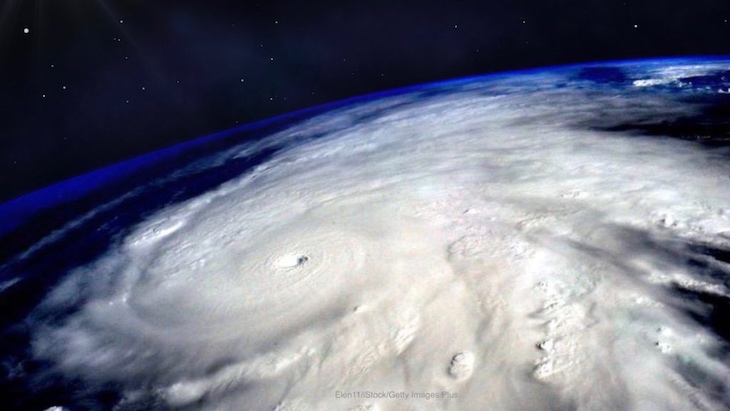The FDA is offering food and water safety advice for those in Hurricane Dorian’s path. The hurricane is making its way up the eastern coast of the United States this week. Hurricane warnings have been posted for the coasts of both North and South Carolina.

When the power goes out, consumers need to take special precautions to make sure that the food stored in their homes remains safe. First, keep refrigerator and freezer doors closed as much as possible. The fridge will keep food cold for about four hours, and a full freezer will keep the temperature low for about 48 hours if the door stays closed.
Dry and block ice can be used to keep food safe for longer periods of time. Fifty pounds of dry ice will keep an 18 cubic foot, fully stocked freezer cold for two days.
Flooding Advice
If flooding occurs, only use water from a safe source for drinking, washing, and preparing food. Use bottled water that hasn’t been exposed to flood waters. Screw caps are not tight enough to make water bottles flood proof.
You can boil or disinfect water to make it safe. First filter the water through clean cloths, or let it settle. Then boil for 1 minute. You can use bleach, but be aware that this method won’t kill all disease-causing organisms that may be in the water. Use 1/8 teaspoon unscented household liquid bleach for each gallon of water. Stir it well, let stand 30 minutes, then store in clean containers.
After Hurricane Dorian has passed and flood waters have subsided, do not eat any food that may have come into contact with the water. Flood waters are extremely dirty and may contain pathogens and even raw sewage. Discard all food and beverages that have touched floodwater that are not in waterproof containers.
Advice For Canned and Pouch Foods
Food containers that are waterproof include undamaged, commercially prepared foods in all-metal cans and “retort pouches,” such as shelf-stable juice or seafood pouches. These products can be sanitized if they have been in contact with flood waters.
First remove the labels, since they can harbor bacteria. Wash the cans and pouches with soap and water and rinse in clean water. Then sanitize these cans and pouches by boiling them for 2 minutes. Dry them for a minimum of 1 hour before opening or storing. Mark the products to identify them and the date using a permanent marking pen. Use these reconditioned products as soon as possible.
Food containers that are not waterproof include those with screw caps, snap lids, pull tops, and crimped lids; throw them away if they have been in contact with flood waters. Discard cardboard juice/milk/baby formula boxes and home canned foods if they have come into contact with flood water.
Always discard food in damaged cans. And thoroughly wash all metal pans, ceramic dishes, and utensils, including can openers, with soap and water. Rinse and sanitize them by soaking for 15 minutes in a solution of 1 tablespoon unscented household liquid bleach per gallon of water. Finally, thoroughly wash countertops with soap and water, and sanitize them as well.
Advice For Refrigerated and Frozen Foods
Check the temperature of your appliances when the power comes back on. If the freezer is 40°F or below, the food can be refrozen Frozen foods can also be safely refrozen if they still contain ice crystals; check each package to determine its safety. You can’t rely on appearance or odor to determine safety.
Foods stored in the fridge should be safe to eat as long as the power wasn’t out more than four hours and the door was kept shut. Discard any perishable food, such as meat, poultry, fish, eggs, or leftovers, that have been at temps above 40°F for 2 hours or more, or 1 hour if the air temperature is above 90°F.
These foods can cause illness even if they are fully cooked, since some bacteria produce toxins that heat doesn’t destroy. Discard any food you aren’t sure of.
Know Foodborne Illness Symptoms
It’s crucial that you know the common symptoms of food poisoning just in case someone does get sick after the hurricane. Symptoms typically include nausea, vomiting, abdominal cramps, and diarrhea that may be bloody. Anyone who is experiencing these symptoms should see a doctor as soon as possible.




